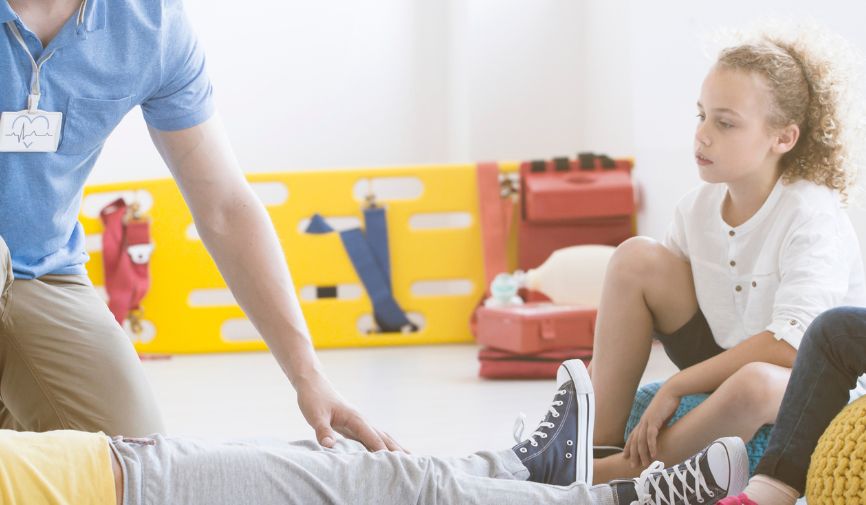It’s been around a year since the UK government responded to years of campaigning by the Oliver King Foundation by announcing they would make defibrillators in schools mandatory by law across the land.
Following that news, in July 2022 it was announced that schools that didn’t already have a defibrillator would be given one by the government before the end of the 2022/23 academic year.
But why do schools need defibrillators in the first place? What of the institutions that don’t want to wait potentially until July? And what options are open to further education establishments like colleges and universities?
In this post we’ll answer those questions and more.
Why are defibrillators so important for schools?
The importance of schools having defibs cannot be understated. Research shows that around 270 children die in schools each year from sudden cardiac arrests. However, defibrillation within the first three-to-five minutes can increase survival chances by up to 40%.
On top of that, British Heart Foundation stats show that only one in 10 people in the UK currently survive an out of hospital cardiac arrest. In part, this is due to lack of fast and easy access to automated external defibrillators (AEDs). With every school in the country given a defibrillator, AED coverage will be at an all-time high, which should (at least in theory) positively impact SCA survival rates.
Can you use a public defibrillator on a child?
You can!
In our post ‘Using CPR and Defibrillation on Children and Infants’ we explain that it’s perfectly safe to administer both to people under the age of eight – albeit with some adaptations to the way it’s done for adults.
When it comes to defibrillators, it’s important to use either an AED that has paediatric pads that lower the voltage from the adult-suggested 150 joules to the child-recommended 50-75 joules, or use one like our own iPAD SP1 which comes with a built-in paediatric attenuator.
Anyone above the age of eight years old is treated in defibrillation terms as an adult – including even children especially small for their age. This is because defibrillation is based on heart age, not body size.
When you consider that not only are survival rates for SCAs incredibly low, but most people wouldn’t automatically know the age differences between defibrillation in children and adults, it shows not only why defibrillators need to be in schools, but also why schools should be defib trained.
Do you need to fundraise for a defibrillator?
If you’re sold on the reasons why schools need defibrillators, you may not want to wait to the end of the academic year to acquire one. If so, there are a few options open to you when it comes to fundraising depending on the kind of institution you need the AED for.
As mentioned in our post ‘Things to Consider When Fundraising For A Defibrillator,’ The British Heart Foundation does offer some financial help to certain organisations looking to install a defibrillator. Its website mentions that ‘schools and colleges’ sadly aren’t eligible, however it does NOT mention universities – so if you’re seeking to raise funds for a uni, contacting the BHF to clarify this point would be a good first port of call.
If funding help isn’t available and you do decide to go the traditional fundraising route, your options are as vast as your imagination. Everything from on-street bucket collection to raffles, bake sales, car washes, comedy nights and summer fetes or even Christmas markets can contribute to your raising money for an AED.
Perhaps the most efficient way to track a fundraising campaign of this nature is to set up a fundraising page. This page at specialist fundraising site GoFundMe has been set up specially to walk you through doing so to raise funds for a defibrillator.
Alternatively, if you’re content to wait for the government’s defibrillators in schools programme, then keep an eye out for communications from the government during the newly-begun autumn term.
Need an AED for your school, college or uni today?
If you understand the importance of schools having defibs and don’t want to wait for a free AED, we don’t blame you. After all, there are over 30,000 out of hospital cardiac arrests each year, and every minute without defibrillation following one lowers the casualty’s survival chances by up to 10%.
Before sourcing a defibrillator for your educational establishment, check out the UK government’s guide to buying and installing AEDs in schools, then visit our AED shop to see our selection of market-leading iPAD defibrillators.
Want to know more about using an AED and saving lives? Check out the blogs below.
Related articles







